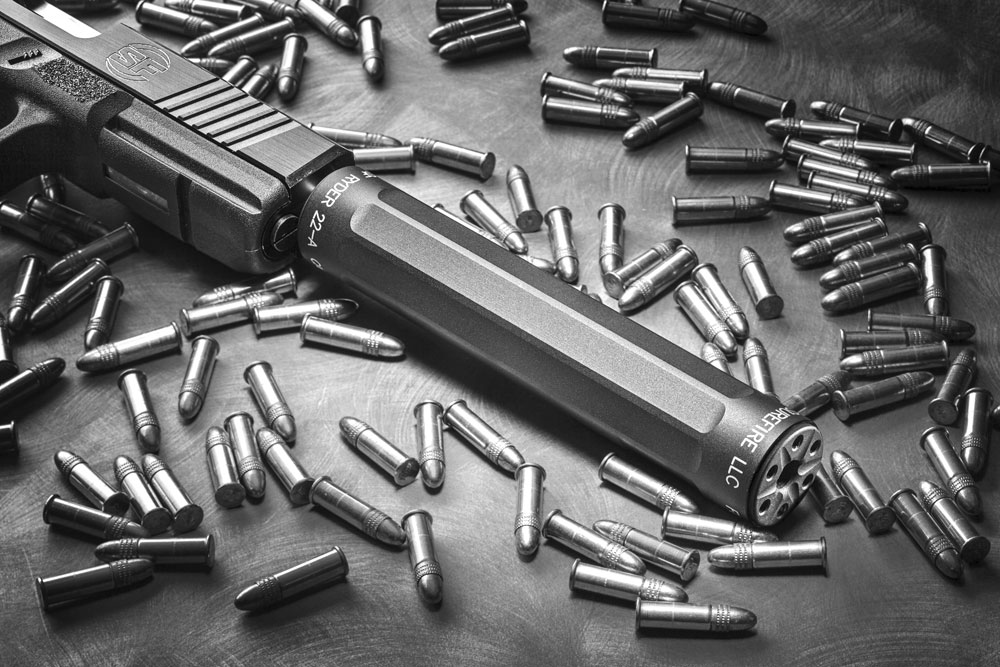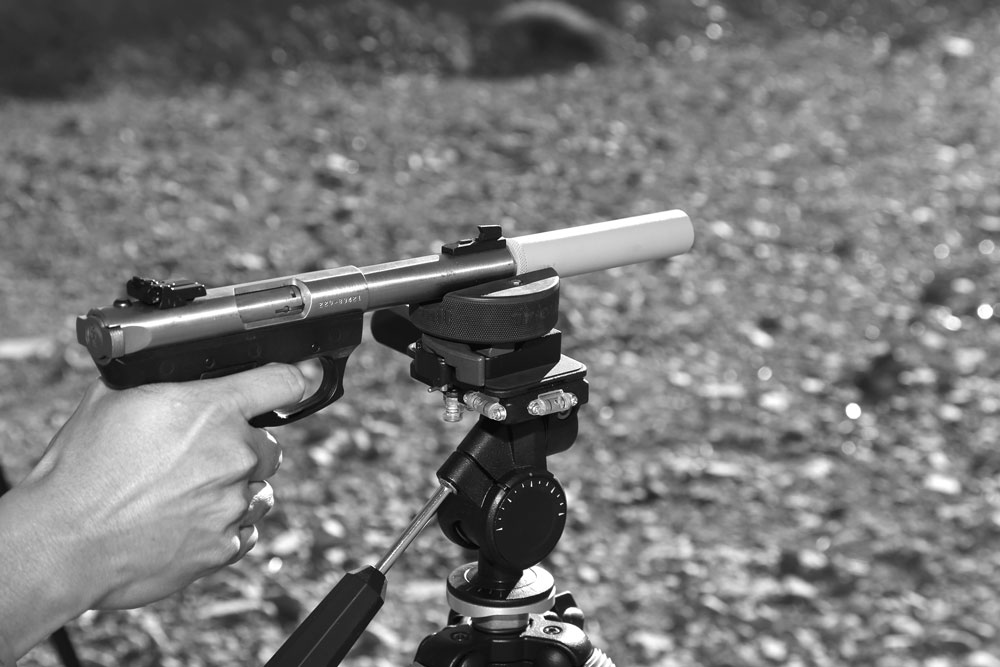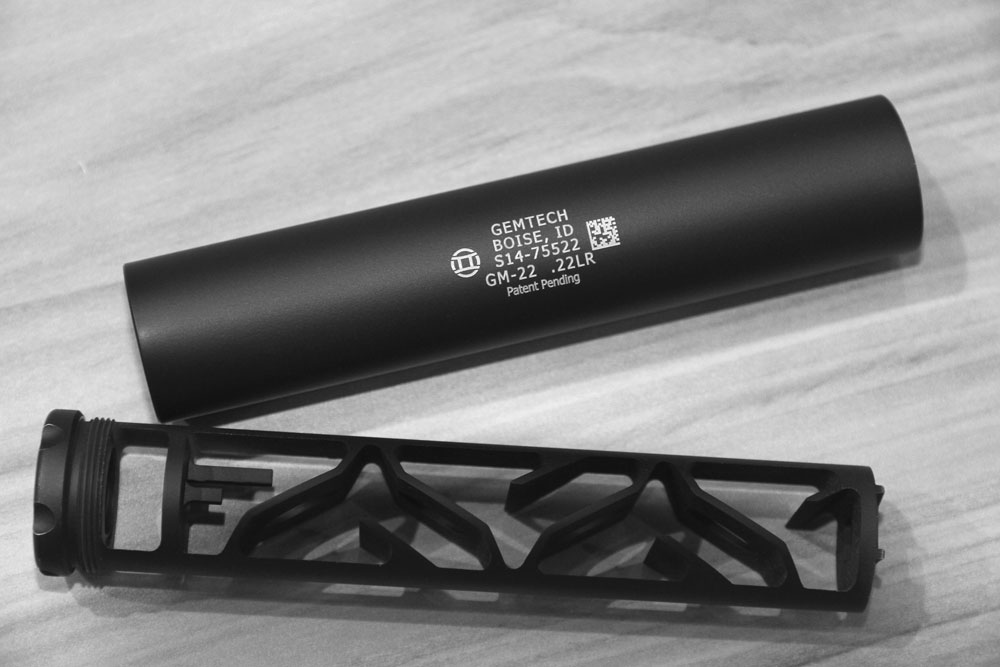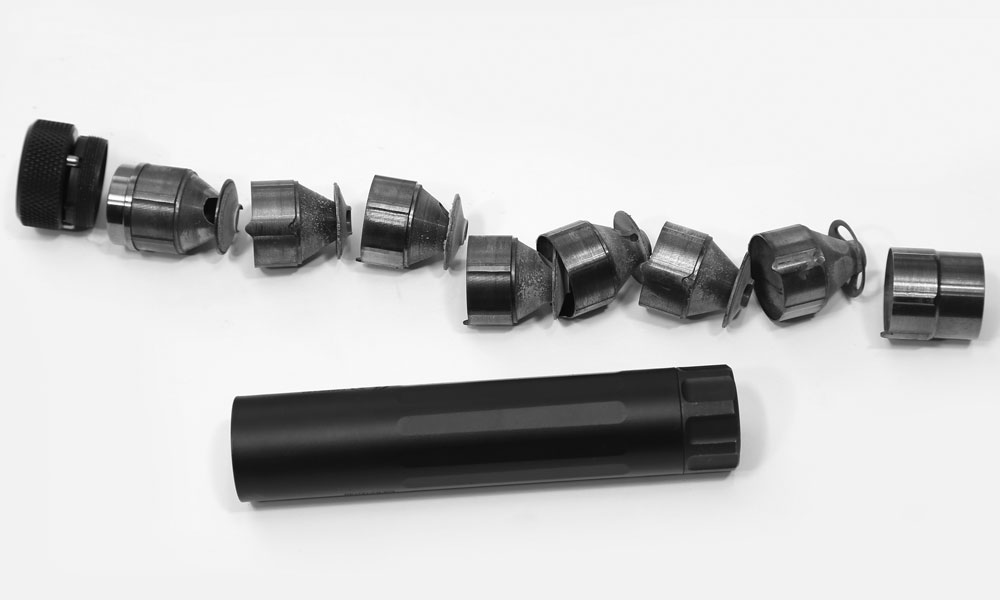By Patrick Sweeney, Gun Digest
 Rimfire suppressors represent a cost-effective way to jump into the suppressor game, but there are some things to keep in mind if you plan on owning one.
Rimfire suppressors represent a cost-effective way to jump into the suppressor game, but there are some things to keep in mind if you plan on owning one.
–
When talk at the gun club turns to suppressors, everyone wants a suppressor for their AR. Something in .223 or 5.56. Or, they want a suppressor for their .308, their long-range precision rifle (aka sniper rifle) or their AR in .308. But, what I find from the manufacturers is that they make a lot of suppressors for rimfire firearms. My personal term for disparities of this magnitude, the numbers made compared to the numbers estimated, is “metric buttload.” They make a lot of rimfire suppressors, compared to the centerfire ones.
Why? Why do they, in some instances, make four, five, ten times as many rimfires as they do centerfires? (And that’s just the companies who make both. There are companies that do not make centerfire suppressors, only rimfire ones.) It comes down to a few things, all revolving around cost. It costs money to buy a suppressor. It costs money to go shooting, and if there’s one thing we can all relate to, it is that there’s no such thing as too much money.
Now, as “expensive” hobbies go, shooting isn’t one of them. Oh, some can be. If you shoot registered trap, you’re going to be essentially burning twenty-dollar bills at the gun club. But, it still isn’t like auto racing. A previous neighbor of ours raced two different classes of cars, at local tracks, nothing national. He was an engineer and builder, so the cars cost him pretty much his time and the parts, which he could often get wholesale. But he could not make tires, and he calculated that if he was careful in racing, he could make two sets of tires last a season, for each of the cars. $4,500 a set, per car, comes to nine grand in rubber a car a season, so eighteen thousand dollars a season just for tires.

–
Inflation has a factor in this but I don’t think I spent $18,000 on handgun shooting in any year, for everything, when I was a serious competitor. Granted, I was reloading all my ammo and building my own guns, but entry fees, travel, etc. didn’t add up to the tire cost for our neighbor. Shooting may cost, but not like really expensive hobbies.
But, if you have a family, then the mortgage, clothes, food, orthodontia, car maintenance all gobble large amounts of money. If you are prudent, then you are pumping money into the kid’s college fund, and your own IRA or 401K. A suppressor is a splurge. One way to ease the impact of that splurge is to buy a rimfire suppressor for $400 instead of a centerfire one for $900-1200. And then feed it .22LR ammo, which costs less than .223, and certainly costs less than .308.
And they are quiet.

–
Why do rimfire suppressors cost so much less? Materials – type and amount. A rimfire suppressor may be only a one-inch tube, instead of the 1.5 inches of a centerfire. Also, it will be made (in most instances) of aluminum, since the .22LR does not generate nearly as much pressure or gas as centerfires do. That all adds up to less material, which happens to be easier to machine, and thus lower cost. There’s also the smaller effect of economies of scale. If you are making a thousand of one item, and a hundred of another, you can bargain for lower costs on materials for the former.
If you place an order for a literal truckload of seamless aluminum tubing, one-inch O.D., you’re going to get a better price than you would buying it one tube at a time.
As a further price decrease, rimfire suppressors do not need a booster, like pistol-caliber suppressors do for handguns. And, it is rare that someone wants a quick-attach mount system on a .22LR suppressor. Direct-thread rules here, and that brings down the cost even more.
Ca-ching, ca-ching, ca-ching.
And the quiet?
Well, the .22LR isn’t all that noisy to start with. Oh, it will make you go deaf if you don’t protect your hearing from it, but the amount of gas to deal with is pretty small. And, the expansion ratio of a .22LR, even a handgun, is pretty large. This soaks up a lot of the gas energy, as the pressure drops and the gases cool. So, it doesn’t take much to deal with it. If you then go with target ammo, which is subsonic for accuracy, not noise reasons, or straight-up subsonic ammo, you get the Hollywood “phht, phht, phht” sound from your Ruger 10-22.

–
Where rimfire suppressors make you pay is in the grubbiness department. Twenty-twos are pretty grubby just as they are. But when you start trapping the muzzle gasses via a suppressor, the carbon deposits become impressive indeed. Remember, there’s lead in there too, so wash your hands after you wash your suppressor.
And if you don’t? Well, if you don’t disassemble and clean your rimfire suppressor after every 500 rounds, you may find it carbon-welded and you can’t take it apart. Then, the aluminum construction works against you, as it may not survive heavy-handed attempts to disassemble. If you don’t scrub your hands after cleaning, you may (read “will”) absorb some lead, which is not good for you. Your body may spend the next year expelling the lead you absorbed from one failure to scrub. That’s right, our moms were all correct; wash your hands, and things will be fine.
If you want to know more about suppressors: Click here to see the “Gun Digest Book of Suppressors” it will only set you back $19.95.
Click here to visit GunDigest.com. Click here to to check out Gun Digest’s Free Downloads.


